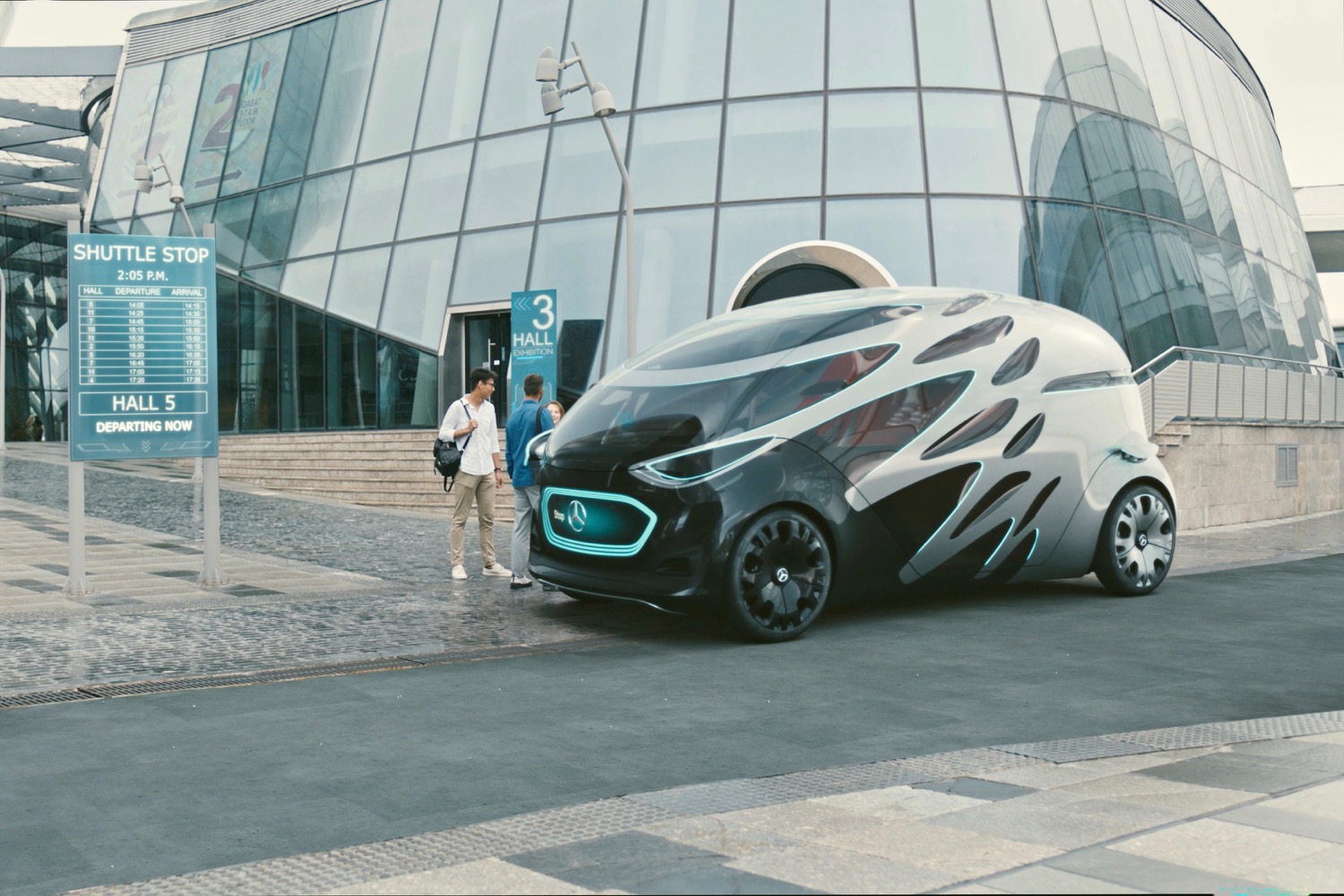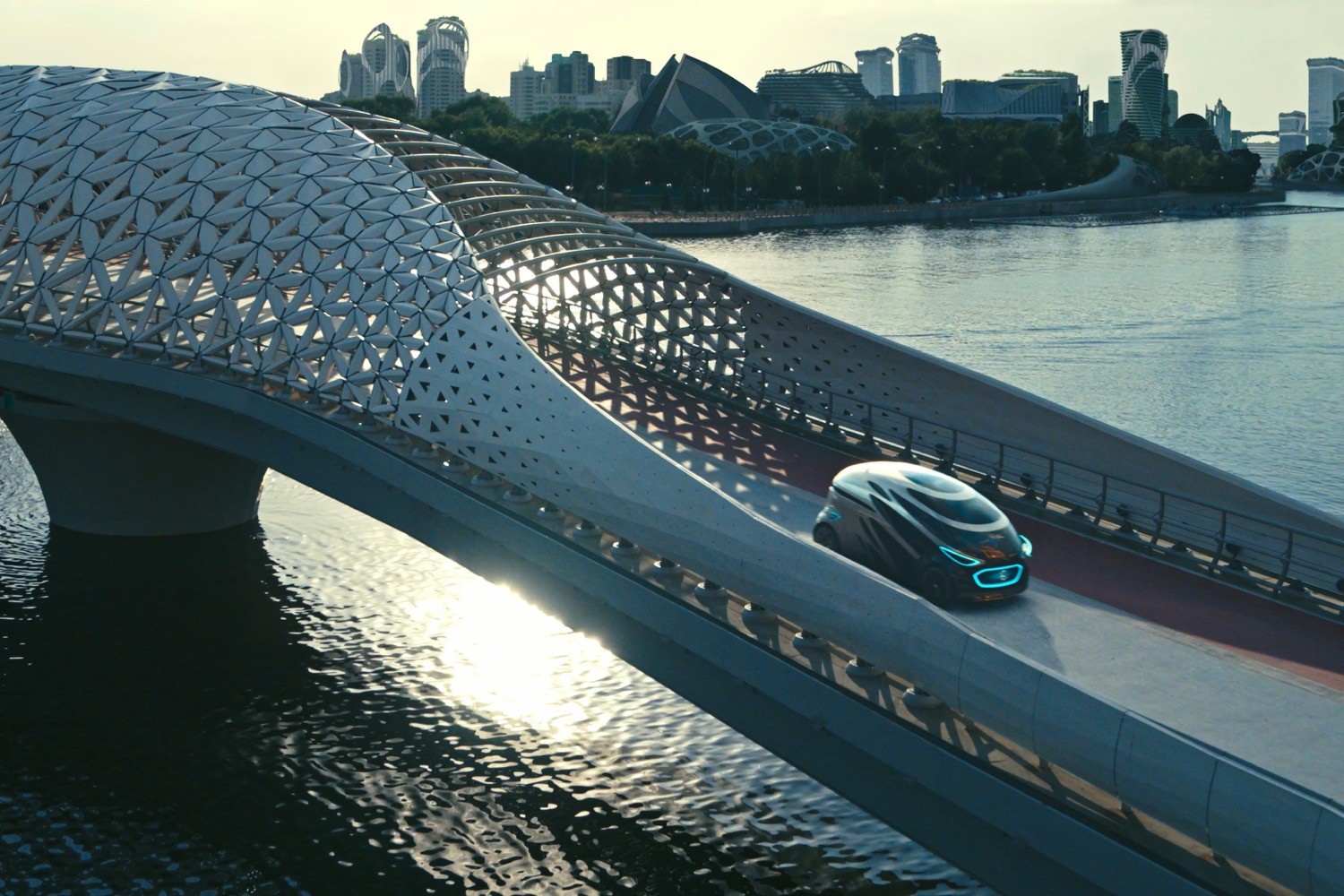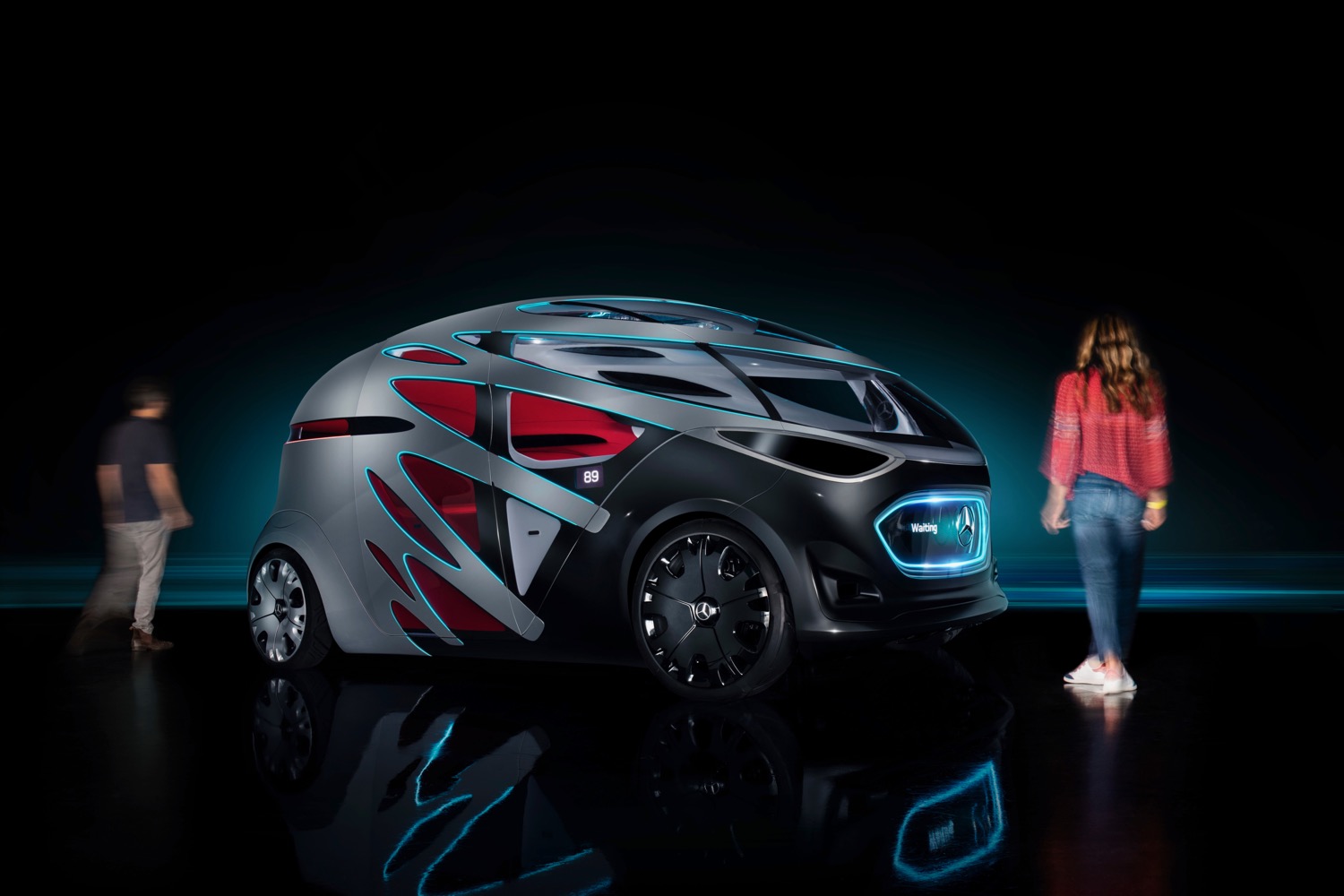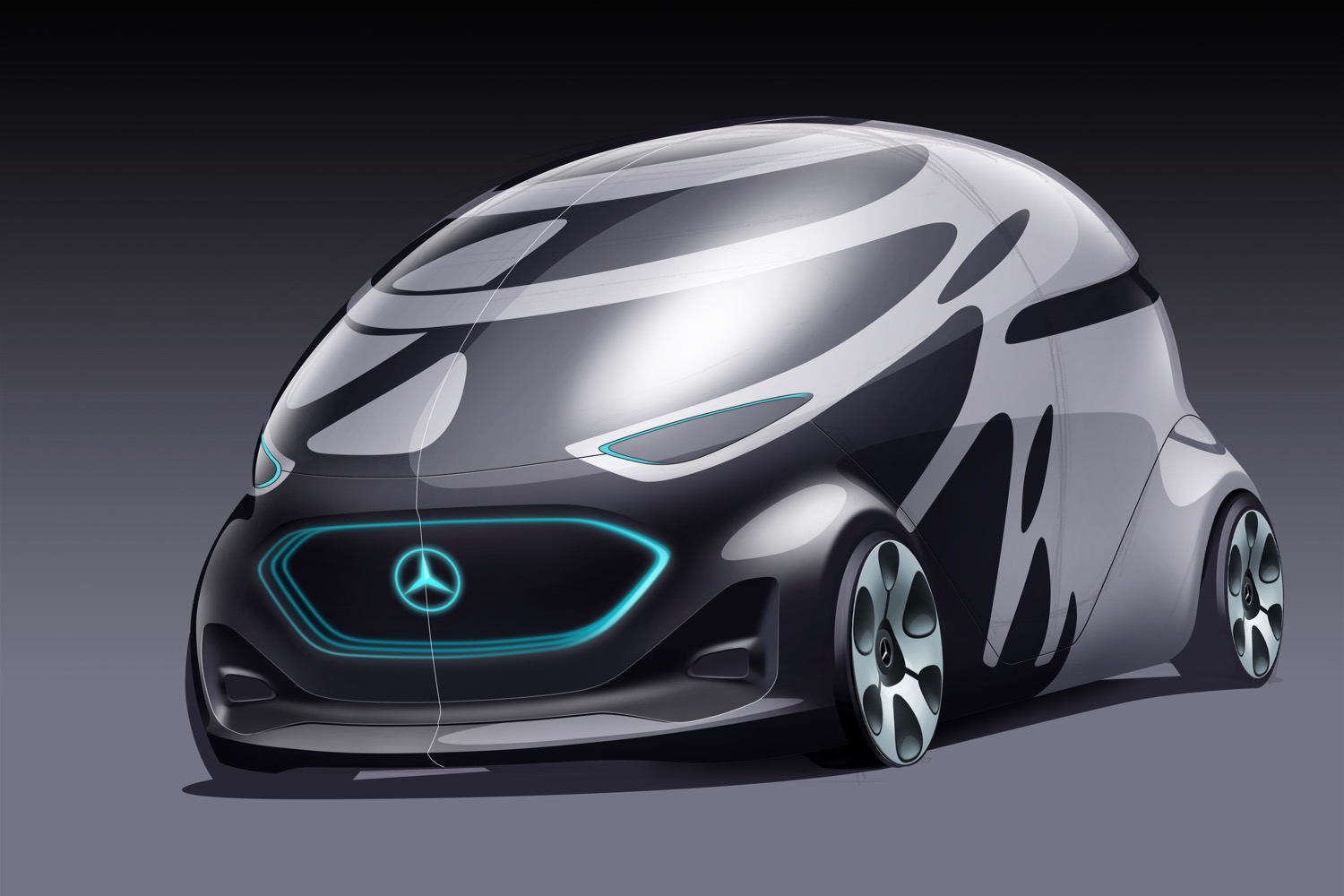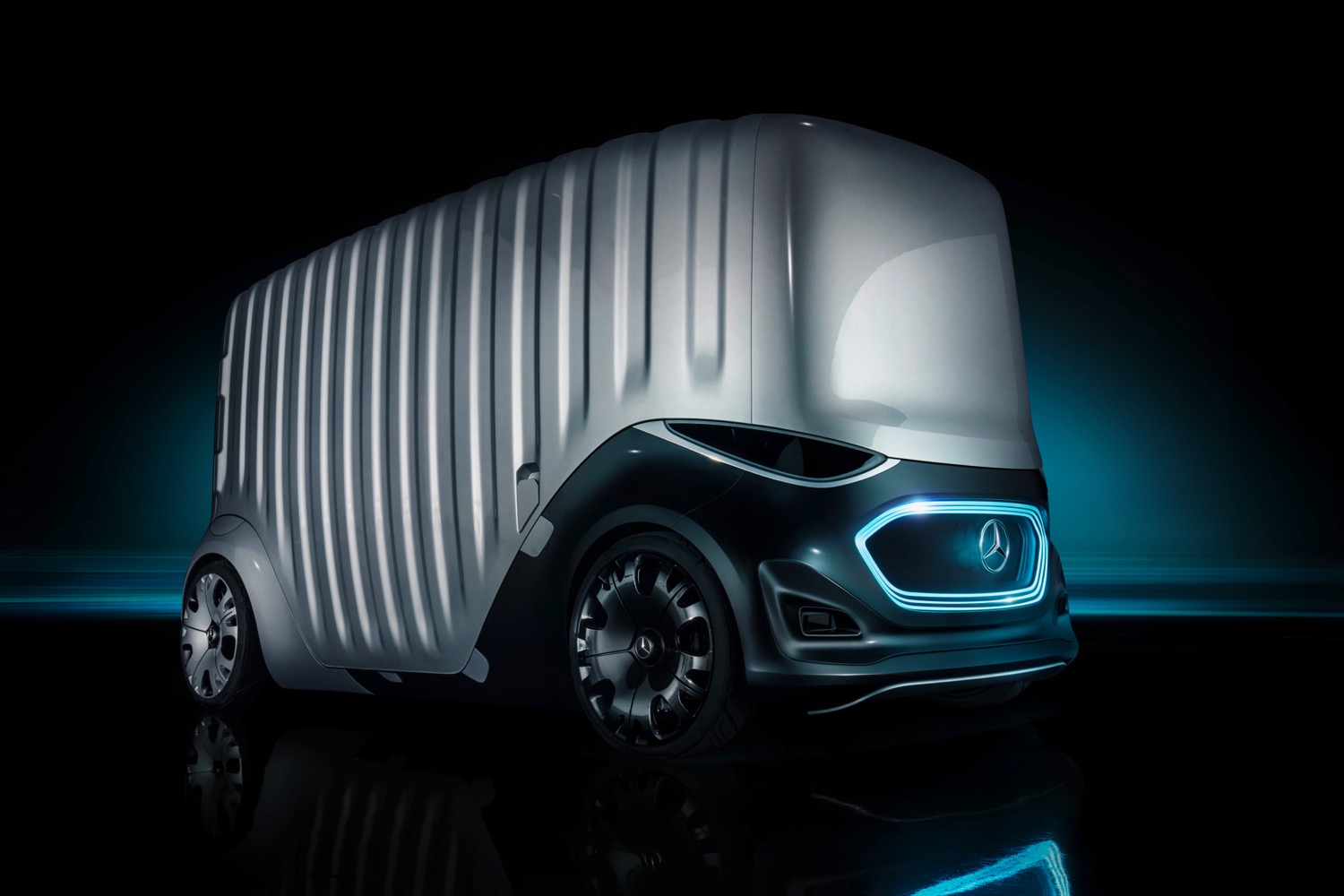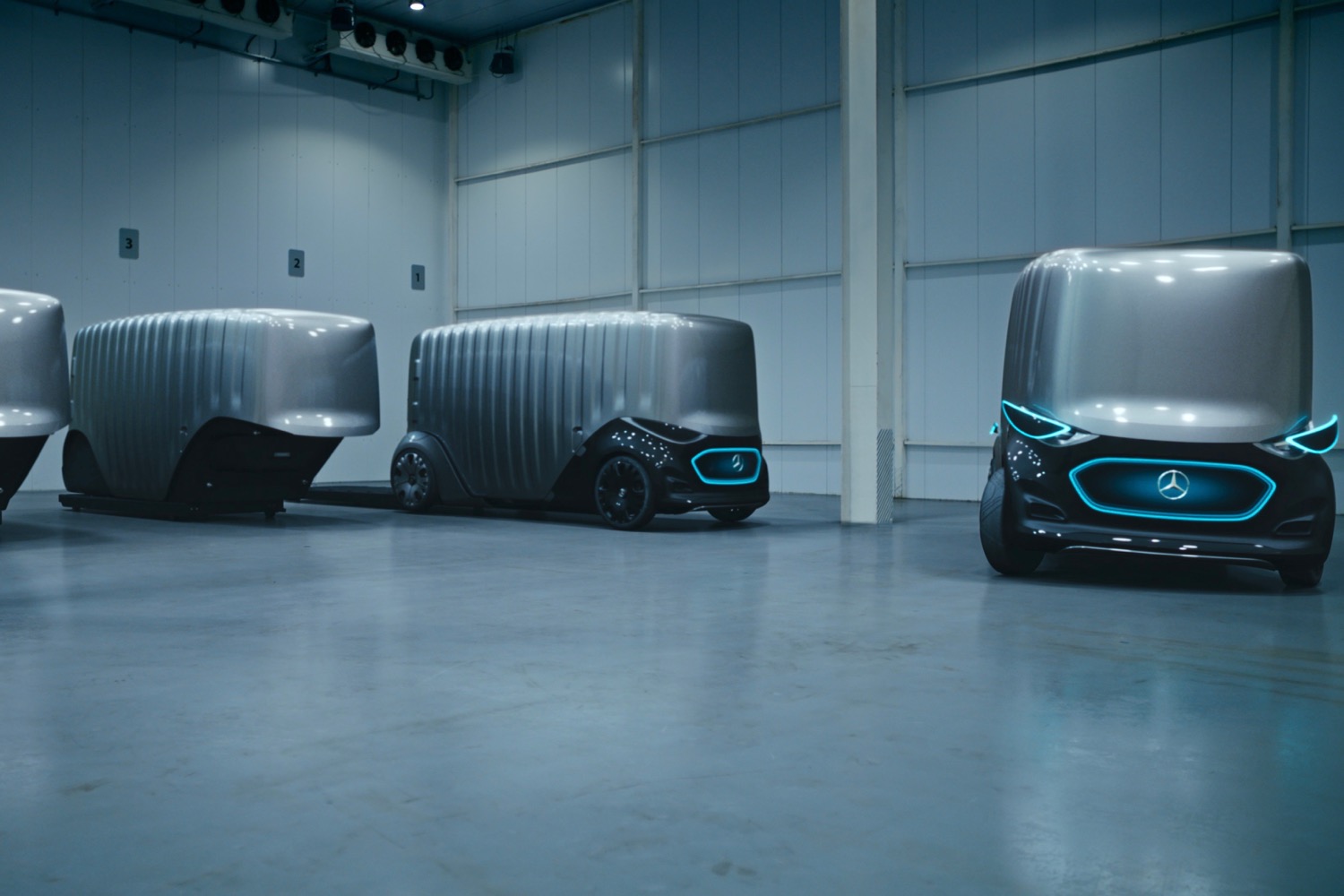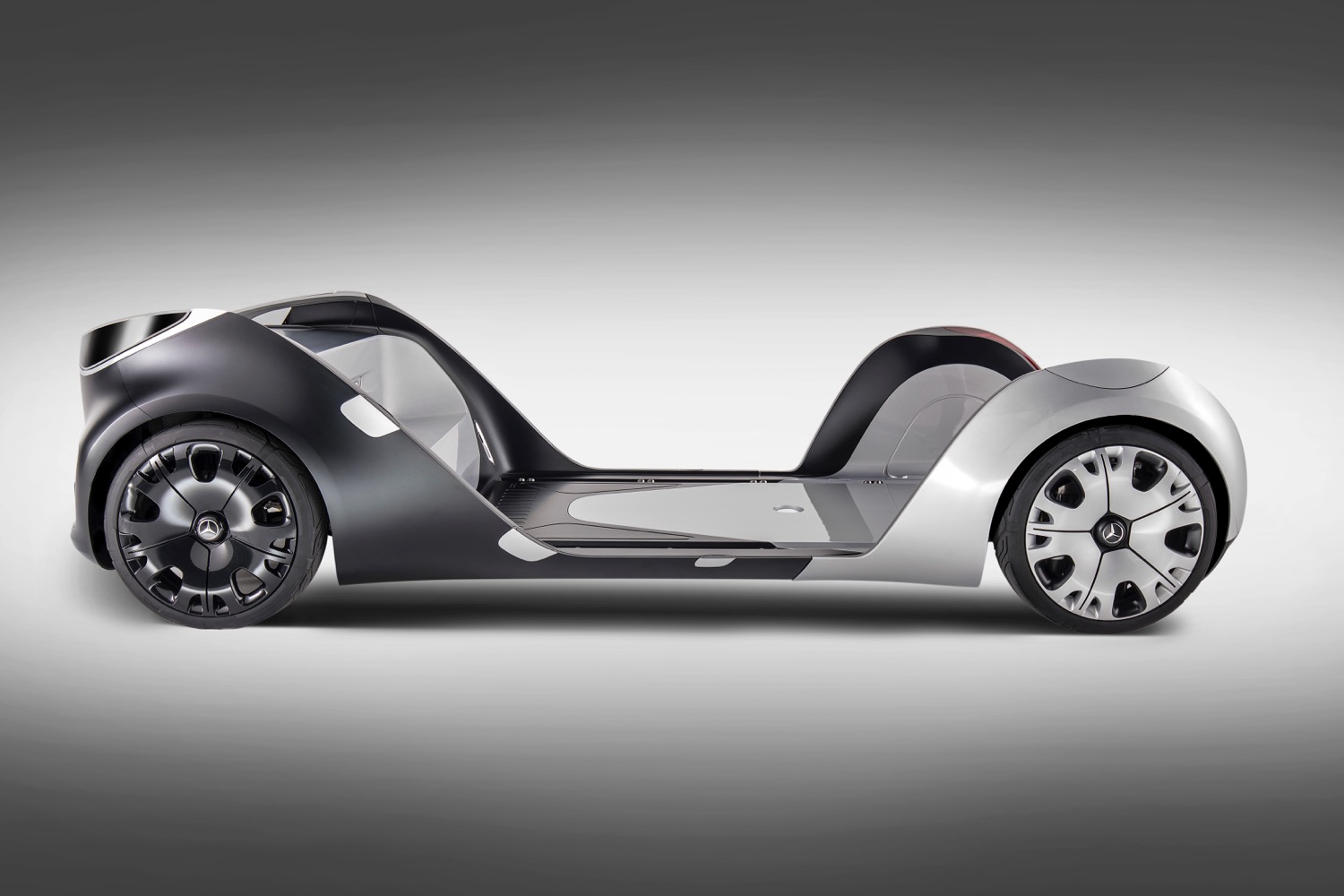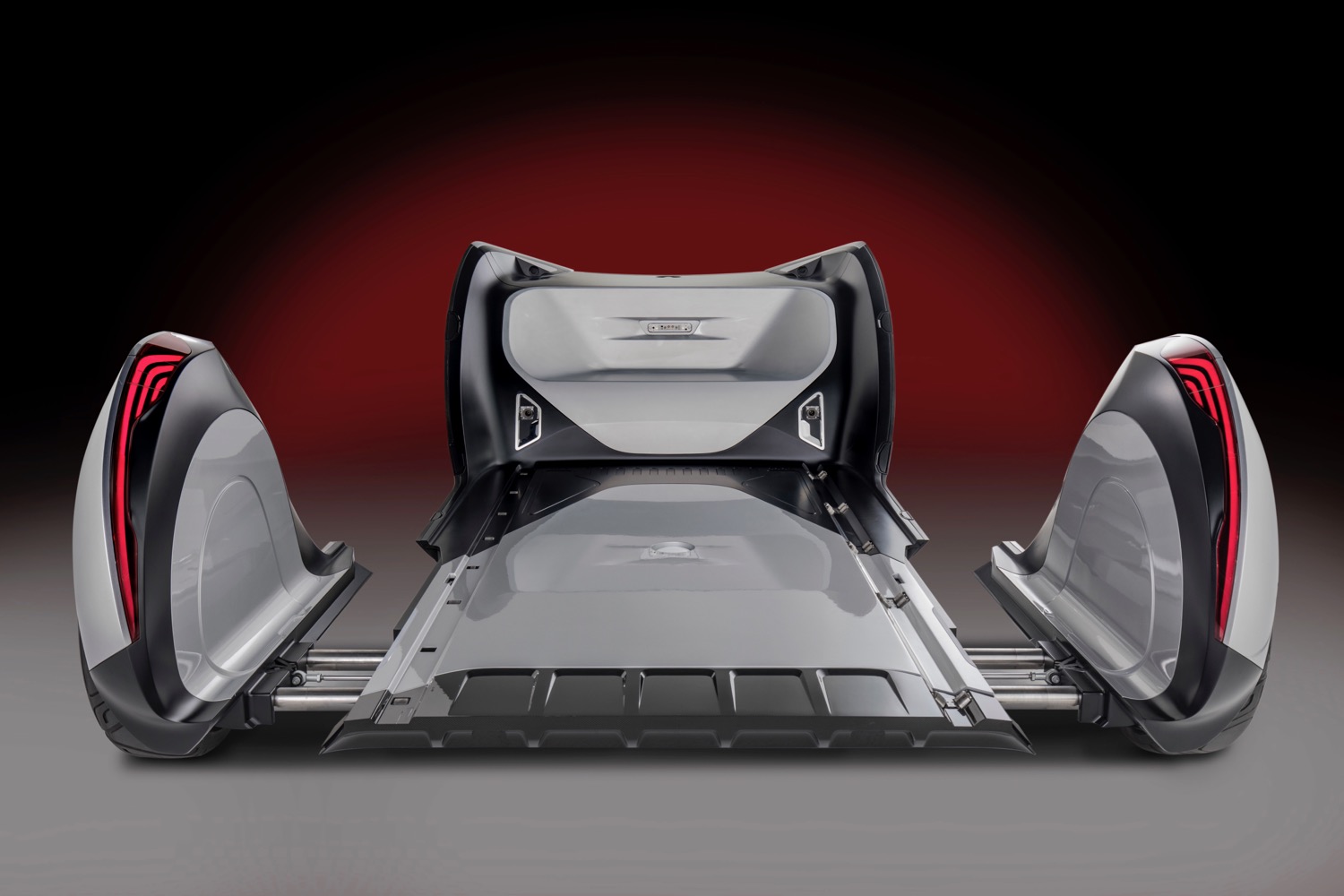Autonomous vehicles will theoretically be able to stay on the road for very long periods of time, meaning they can generate more revenue for owners. To take full advantage of that, the Mercedes-Benz Vision Urbanetic concept can switch bodies, going from cargo van to ridesharing shuttle like an over-caffeinated workaholic juggling part-time jobs.
Similar to the Toyota e-Palette concept unveiled at CES 2018, the Mercedes consists of a flat chassis and multiple bodies that can be snapped in place like Lego. A passenger version can accommodate up to 12 people (eight seated, four standing), but that can be substituted for a cargo box. All mechanical components are housed in the flat chassis, an idea that dates back to the General Motors Autonomy concept of the early 2000s. This, along with the elimination of a driver’s cab, maximizes interior space.
Bodies are designed to be switched manually or through an automatic system that takes just a few minutes, according to Mercedes. The bare chassis was also designed to drive around without a body, giving operators a bit more flexibility. Mercedes envisions fleet operators digitally summoning one of these vehicles when needed. The automaker believes this will allow the same amount of people and cargo to be transported with fewer vehicles, allowing urban areas to grow economically without the need for more road construction.
With a body attached, the Vision Urbanetic can use an array of cameras and sensors to observe its surroundings, and communicate to other road users with lights. The vehicle can, for example, illuminate a frontal display to tell pedestrians that it’s giving them the right of way. Inside, augmented reality displays can sync with a passenger’s smartphone and display personalized information.
The Mercedes-Benz Vision Urbanetic is just a concept vehicle; it’s unclear if anything even remotely similar will ever make it to production. But Mercedes’ prediction that future self-driving cars will be used mostly by fleets is sound. Deploying autonomous cars in ridesharing or delivery services is a lot less risky than selling them to individual buyers. It allows companies to maintain more control over this new and untested technology, and make more money off of it in the long run.
Editors' Recommendations
- Mercedes’ electric eSprinter isn’t just greener, it’s better
- Mercedes-Benz Vision One-Eleven concept looks to the past for inspiration
- We drove Mercedes’ hand-built EQXX concept, and it’s unlike any other EV
- Mercedes-Benz Vision EQXX concept is a luxury EV with a 621-mile range
- Mercedes-AMG shifting gears with a variety of hybrids and EVs on their way
